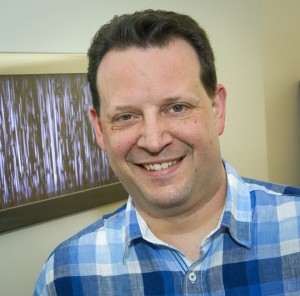 The Labwide initiative, Microbes-to-Biomes (M2B), has kicked off with five projects funded through the Laboratory Directed Research and Development (LDRD) program, and a new website to chronicle news and advancements in M2B’s research mission. The M2B initiative is designed to explore and reveal the interactions of microbes with one another and with their environment – interactions that are vital to the Earth’s future. To jumpstart the discovery process, M2B is targeting two key systems: the soil-plant biome and the gut microbiome. Research areas include Food and Fuel Production, Carbon Management, Environmental Stewardship, and Health and Environment.
The Labwide initiative, Microbes-to-Biomes (M2B), has kicked off with five projects funded through the Laboratory Directed Research and Development (LDRD) program, and a new website to chronicle news and advancements in M2B’s research mission. The M2B initiative is designed to explore and reveal the interactions of microbes with one another and with their environment – interactions that are vital to the Earth’s future. To jumpstart the discovery process, M2B is targeting two key systems: the soil-plant biome and the gut microbiome. Research areas include Food and Fuel Production, Carbon Management, Environmental Stewardship, and Health and Environment.
 Two PBD scientists, Adam Deutschbauer and Trent Northen, are co-PIs on separate projects within the Soil-Plant Biome portion of M2B. Deutschbauer will be partnering with Matthew Blow (Genomics Division & Joint Genome Institute) to engineer phosphate solubilizing plant-associated bacteria. This would allow the bacteria that are already co-localized with plants to convert existing phosphorus sources in the soil to soluble forms, thereby making it available for plant uptake. Increasing the amount of soluble phosphorus in the soil would mean decreasing the use of costly and environme
Two PBD scientists, Adam Deutschbauer and Trent Northen, are co-PIs on separate projects within the Soil-Plant Biome portion of M2B. Deutschbauer will be partnering with Matthew Blow (Genomics Division & Joint Genome Institute) to engineer phosphate solubilizing plant-associated bacteria. This would allow the bacteria that are already co-localized with plants to convert existing phosphorus sources in the soil to soluble forms, thereby making it available for plant uptake. Increasing the amount of soluble phosphorus in the soil would mean decreasing the use of costly and environme ntally damaging phosphate fertilizers in high yield agriculture. Northen and Javier Ceja Navarro (Earth Sciences Division) will be leading a project looking at uncovering the Soil Metazoan Microbiome, a key compartment that is important for plant health and root carbon fixation. Metazoans are multicellular organisms of the Kingdom Animalia (also called Metazoa);
ntally damaging phosphate fertilizers in high yield agriculture. Northen and Javier Ceja Navarro (Earth Sciences Division) will be leading a project looking at uncovering the Soil Metazoan Microbiome, a key compartment that is important for plant health and root carbon fixation. Metazoans are multicellular organisms of the Kingdom Animalia (also called Metazoa);
 Steve Singer, a scientist in the Earth Sciences Division and Director of Microbial Communities at the Joint BioEnergy Institute, will be working with Tanja Woyke and Natalia Ivanova, both of the Genomics Division and Joint Genome Institute, to use function-driven genomics to capture carbon degrading microbes with fluorescent substrate bait. Together, they will apply novel approaches to experimentally capture bacteria that degrade plant-derived biopolymers (e.g., cellulose) for sequence-based characterization. Singer and his colleagues intend to greatly advance our understanding of soil carbon cycling, which will have implications on below-ground carbon storage and atmospheric C flux. This same information and microbial functional potential can also be harnessed to improve the breakdown of plants for the production of biofuels.
Steve Singer, a scientist in the Earth Sciences Division and Director of Microbial Communities at the Joint BioEnergy Institute, will be working with Tanja Woyke and Natalia Ivanova, both of the Genomics Division and Joint Genome Institute, to use function-driven genomics to capture carbon degrading microbes with fluorescent substrate bait. Together, they will apply novel approaches to experimentally capture bacteria that degrade plant-derived biopolymers (e.g., cellulose) for sequence-based characterization. Singer and his colleagues intend to greatly advance our understanding of soil carbon cycling, which will have implications on below-ground carbon storage and atmospheric C flux. This same information and microbial functional potential can also be harnessed to improve the breakdown of plants for the production of biofuels.



